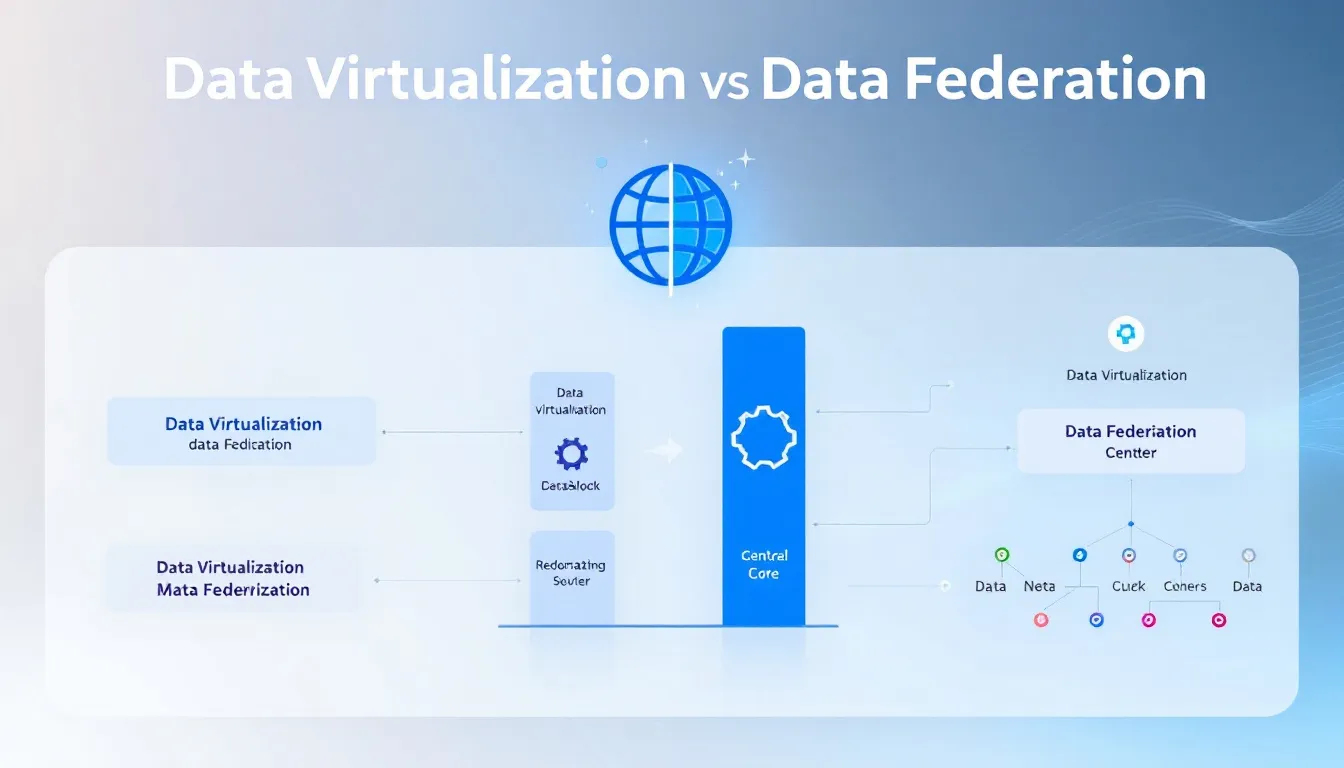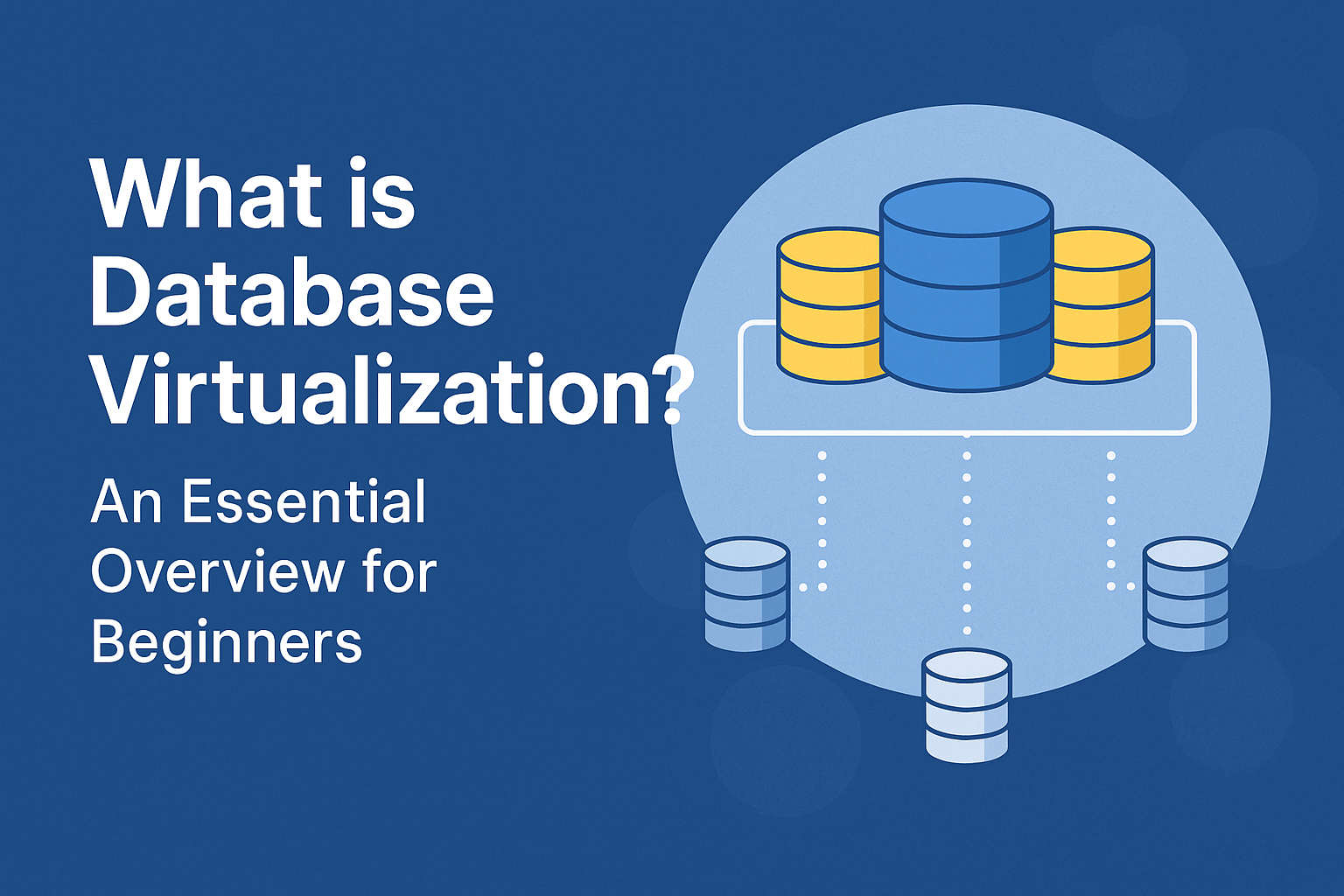Data Virtualization vs Data Lake: Making the Right Choice for Your Business
Deciding between data virtualization vs data lake is key for your data strategy. Data virtualization offers real-time access to multiple sources without moving data. Data lakes store large volumes of diverse data in a centralized repository.
This article compares both, highlighting differences, benefits, and use cases to guide your choice.
Key Takeaways
-
Choosing between data virtualization and data lakes depends on organizational needs, with data virtualization excelling in real-time integration and data lakes offering cost-effective storage and comprehensive analysis capabilities.
-
Data virtualization provides real-time data access by integrating disparate data sources without physical data movement, enhancing agility and decision-making.
-
Data lakes serve as centralized repositories for large volumes of raw and structured data, offering scalable storage solutions ideal for big data analytics and machine learning projects.
Key Differences Between Data Virtualization and Data Lakes

While both data virtualization and data lakes aim to provide access to data for better business decision-making, they do so in fundamentally different ways. Integrating data from disparate sources to create a cohesive and accessible view for end users is crucial in this context. Leveraging these technologies can unlock significant value by deriving business insights and operational advantages. Choosing between these two solutions can affect scalability, cost, and performance, depending on your organization’s specific needs.
Understanding these differences is crucial for making an informed choice, which is why we’ll explore the key distinctions in the following subsections. Large organizations managing extensive data across various platforms and applications face significant challenges with disparate systems. Modern solutions like data lakes and virtualization are essential to improve data accessibility and management. The data management landscape is evolving rapidly with new technological advancements, making it imperative for organizations to stay updated and adapt their strategies accordingly.
Data Storage vs. Virtual Access

Data lakes serve as physical storage solutions for enterprise data, accommodating massive amounts of raw data in a centralized repository. This centralized approach allows for efficient storage management and eliminates the need for creating multiple copies of the same data. Data stays where it is within the data lake, and queries are run directly on the physical storage system, which is particularly beneficial for analytics tasks. A data lake allows for rapid reevaluation of business operations and innovation.
In contrast, data virtualization focuses on providing virtual access to data, allowing querying data to access data in its original location rather than requiring a physical copy. This means that data does not reside in a single physical location within a data virtualization setup, maintaining the existing storage systems in place. Data virtualization creates a seamless experience for users.
Queries hit the underlying database without moving the data, enabling rapid access to information. This virtual layer approach can significantly enhance data agility and streamline data processing through an abstraction layer, utilizing a query engine.
Data Integration and Movement
Integrating disparate data silos has long been a challenge for organizations using traditional data warehouses. Data virtualization excels in real-time data integration, making it particularly valuable in sectors like finance and telecommunications that require immediate data access for operations. Data is transferred from the source system to a virtualization platform, and as data volumes increase, this transfer can impact performance. A unified view of data from multiple sources helps businesses make quicker and more informed decisions through data virtualization. Additionally, organizations use data hubs for operational analytics and ERP integration, further enhancing their ability to manage and analyze data effectively.

On the other hand, data lakes facilitate the integration of diverse data sources by storing all data in a centralized repository. Data virtualization integrates information from multiple source systems without centralizing the data. This approach simplifies data movement and minimizes the need for extensive data replication. Accommodating extremely large data volumes, data lakes enable organizations to consolidate data from various units, providing a comprehensive view that supports extensive analytics and reporting. Data in a data lake can be analyzed across diverse platforms using SQL query engines.
Scalability and Performance
Cloud-based data lakes offer virtually unlimited scalability, making them ideal for businesses with growing data needs. The open data architecture of data lakes allows for the seamless introduction of new engines, enhancing processing capabilities and ensuring that performance remains robust even as data volumes increase. Cloud data lakes provide infinitely scalable low-cost storage. This scalability is a significant advantage for organizations that deal with massive amounts of data and require flexible solutions.

Data virtualization allows organizations to access and integrate data from multiple sources without the need for physically moving data to a centralized storage system.
However, data virtualization can face performance issues at scale due to the complexity of managing data movement. As data volumes increase, the performance of data virtualization solutions may slow down, necessitating additional hardware to handle the demands.
Despite these challenges, advancements in query acceleration are helping to improve the performance of data processing in virtualization platforms.
Factory Thread: Unifying the Power of Data Virtualization and Data Lakes for Manufacturing
Choosing between data virtualization and data lakes doesn't have to be an either/or decision—especially in manufacturing. Factory Thread delivers a smart, hybrid solution that harnesses the real-time agility of virtualization and the scalable storage of data lakes, all in one platform purpose-built for industrial operations.
Real-Time Access Without Data Movement
Factory Thread’s virtualization layer connects ERP, MES, CRM, and quality systems—enabling real-time queries without the need to copy, replicate, or move data. This ensures decision-makers have the latest information at their fingertips while maintaining full control over their data sources.
Streamlined Integration Meets Scalable Storage
By combining virtual access with the ability to interface with data lakes and raw data repositories, Factory Thread empowers organizations to:
-
Perform real-time analytics on live production data
-
Store historical sensor data or logs in data lakes for AI/ML modeling
-
Build dashboards, alerts, and workflows using unified data—virtual and stored
This makes it ideal for manufacturers balancing real-time operational decisions with long-term analytics projects.
Low-Code Design and AI Workflow Assistance
Factory Thread’s drag-and-drop interface and AI-generated workflows dramatically reduce time-to-integration. Whether it’s streaming shop floor telemetry into a data lake or virtualizing real-time order status for dashboarding, the platform is designed for speed and usability across technical and non-technical teams.
Designed for Hybrid Environments
Deployable across cloud, edge, or on-prem environments, Factory Thread supports:
-
Direct integration with cloud object stores (e.g., AWS S3) for low-cost data lake storage
-
Real-time access through OData and REST APIs for virtualized data delivery
-
Centralized governance to enforce data access, privacy, and compliance policies
Future-Proof Data Strategy for Manufacturers
Factory Thread eliminates the trade-off between fast access and long-term storage. By blending data virtualization and data lake connectivity into a single, secure, scalable platform, it becomes the go-to solution for manufacturers looking to:
-
Boost operational agility
-
Lower integration and storage costs
-
Support big data and AI initiatives
For manufacturers navigating the complexities of modern data architectures, Factory Thread offers a clear path to smarter, unified data management.
Exploring Data Lakes

A data lake is a central repository that can store data at any scale or structure, making it a versatile solution for businesses dealing with diverse data types. Data lakes offer low-cost, scalable storage solutions using inexpensive object stores, allowing both raw and structured data to coexist. This flexibility makes data lakes particularly suited for use cases such as analytics sandboxes, training machine learning models, and addressing low-cost storage needs, with data stored efficiently. The structure of the data in a data lake is applied after the data is ingested, allowing for greater flexibility in how the data is used. Data lakes store data at a low cost by utilizing open-source tools like Hadoop. Additionally, the integration of data lakes with the Hadoop ecosystem highlights their relevance for storing large volumes of structured and unstructured data cost-effectively. In contrast, a data warehouse is a structured storage solution requiring significant upfront design of schemas, providing a distinct role in data management by supporting rapid analytics and business innovation.
One of the standout features of data lakes is their ability to handle extremely large data volumes and large volumes without performance degradation. This means that as data volume increases, multiple users can still perform analytics tasks simultaneously without experiencing slower query performance. Many organizations are moving from an on-premises Hadoop landscape to cloud-based object stores like Amazon S3, indicating a significant shift in data storage strategies.
With the ability to accommodate any type of data, data lakes provide a robust foundation for big data analytics, supporting the needs of data scientists and other data professionals. Many organizations rely on their data lakes as their 'data science workbench' to drive machine learning projects.
Benefits of Data Lakes
Data lakes are known for being more cost-effective than traditional data warehousing solutions. With their open data architecture, data lakes offer a low-cost, scalable storage solution that accommodates both structured and unstructured data. This centralized storage solution simplifies the gathering and indefinite preservation of diverse data types, making it easier for businesses to keep their data current and secure.
A modern data lake architecture simplifies data access and management by eliminating the complexities associated with managing permissions and maintaining data consistency in multiple locations.
Another significant benefit of data lakes is their scalability, which allows businesses to easily expand their data storage as needed. This scalability is particularly advantageous for development teams, as data lakes provide a low-cost analytics sandbox where they can safely explore and analyze data without affecting production systems. This flexibility and cost-effectiveness make data lakes an attractive option for many organizations.
Challenges with Data Virtualization
Despite its many advantages, data virtualization is not without its challenges. Here are some key points to consider:
-
Managing virtual databases can consume substantial resources, particularly when preparing and locating data for analytics tasks.
-
The performance of data virtualization may degrade significantly under resource-intensive batch processes.
-
Additional hardware may be required to handle the increased demands.
Data virtualization enhances the end user experience by providing a platform that simplifies data retrieval and manipulation.
Another challenge is the potential for a single location point of failure, which can risk the overall system availability if the central server goes down. Additionally, data virtualization is not universally applicable, as some parts of a data ecosystem may resist virtualization due to technical or data security limitations and underlying systems.
These challenges highlight the importance of carefully considering the specific needs of your organization before implementing a data virtualization solution.
Drawbacks of Data Lakes
While data lakes offer numerous benefits, they also come with their own set of challenges. One common issue is data duplication, which can create inconsistencies and necessitate numerous ETL processes. Over 25% of an organization’s data can be duplicated, leading to inefficiencies and increased storage costs. Security concerns are another major challenge, especially with new GDPR regulations imposing restrictions on data location.
Data marts, alongside data warehouses, contribute to complexities in data management, especially when integrating with data virtualization solutions.
Additionally, data lakes are at risk of becoming ‘data swamps’ due to a lack of governance and data quality controls. Without proper management, the data within a lake can become disorganized and difficult to use, undermining the benefits of having a centralized repository. These drawbacks emphasize the need for robust governance and data quality measures to ensure that data lakes remain valuable assets.
Use Cases: When to Choose Data Virtualization
Data virtualization is particularly well-suited for scenarios that require real-time data access and integration. Businesses needing to perform ad-hoc SQL queries on non-relational data sources can benefit greatly from data virtualization. This technology also supports quicker decision-making processes by providing immediate access to necessary data.
The importance of systems and technologies that collect data from various sources, such as machine sensors and social media, cannot be overstated. Effective data collection is crucial for analyzing and deriving business insights, particularly in the context of utilizing data lakes that require efficient data collection and transformation strategies.
In sectors like finance and telecommunications, where timely data access is critical, data virtualization can be a game-changer.
Use Cases: When to Opt for Data Lakes
Data lakes are ideal for scenarios that involve streaming data, low-cost storage, and supporting data science projects, including various data lake use cases. They excel in handling Internet of Things (IoT) data, which requires the storage and processing of high-velocity data streams.
The real-time dashboarding capabilities of data lakes support immediate insights, making them crucial for fast-paced business decision-making. Organizations looking to store and analyze large datasets in a cost-effective manner will find data lakes to be a fitting solution.
Combining Data Virtualization and Data Lakes
Combining data virtualization and data lakes can offer a powerful solution for businesses seeking to maximize their data management and analytics capabilities. Data lake engines with virtualization capabilities have entered the market, enabling effective access and analytics within a data lake architecture. Data virtualization integrates information from multiple source systems without centralizing the data, enhancing data management and analytics. The emergence of data lake engines has blurred the distinction between data lakes and traditional data virtualization. This synergy allows organizations to leverage the scalability and cost-effectiveness of data lakes while enjoying the real-time data access and integration benefits of data virtualization.
This combination is particularly beneficial in industries like insurance and banking, where integrating diverse data sources into comprehensive profiles enhances customer profiling. In manufacturing, data lakes support predictive maintenance by integrating data from various sources, enabling timely interventions to prevent equipment failures.
Leveraging both technologies allows businesses to achieve a more flexible, scalable, and efficient data management strategy.
Share this
You May Also Like
These Related Stories

Data Virtualization vs Data Warehouse: Essential Differences Explained

Data Virtualization vs Data Federation



No Comments Yet
Let us know what you think